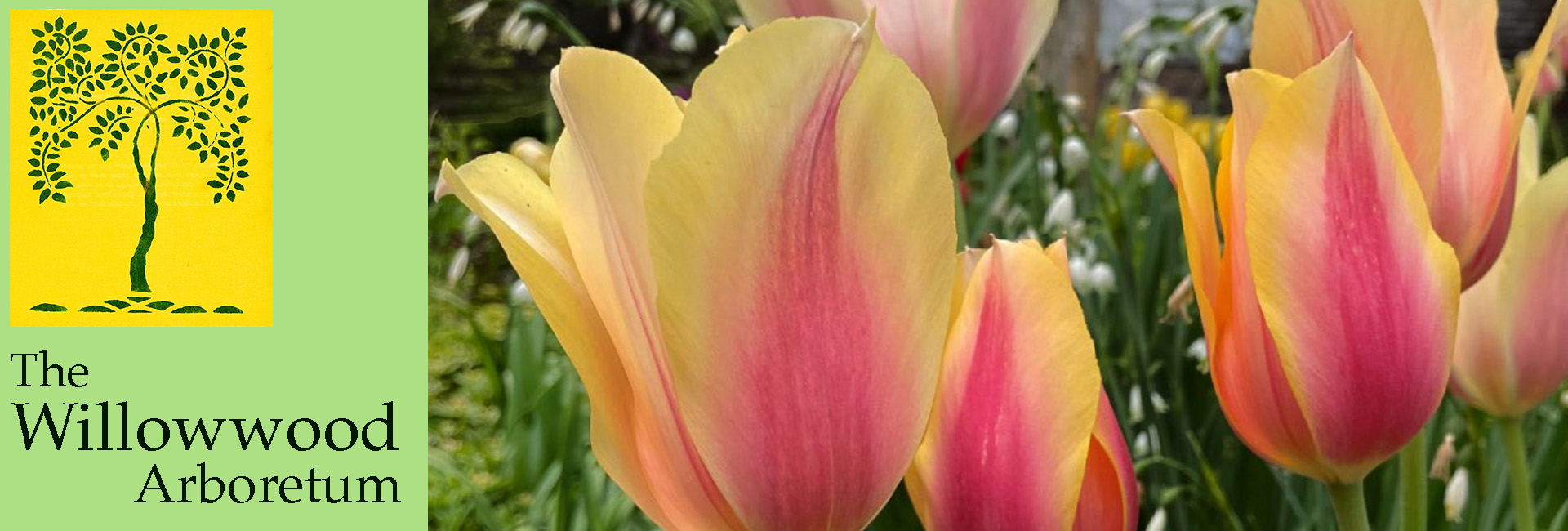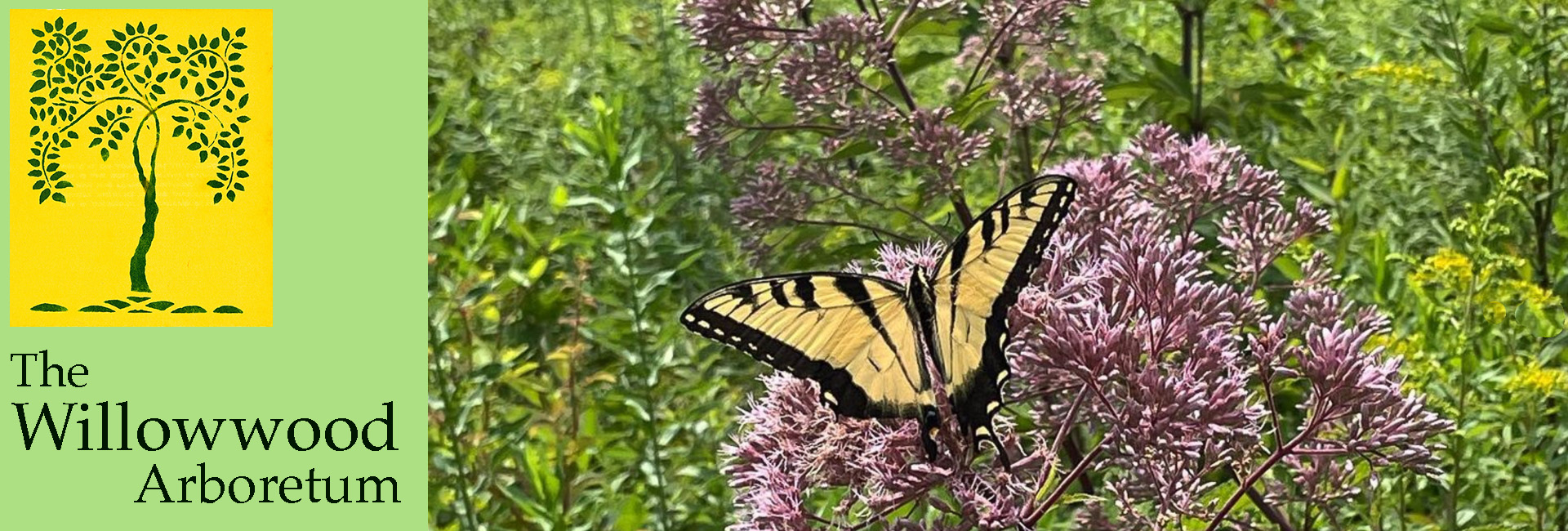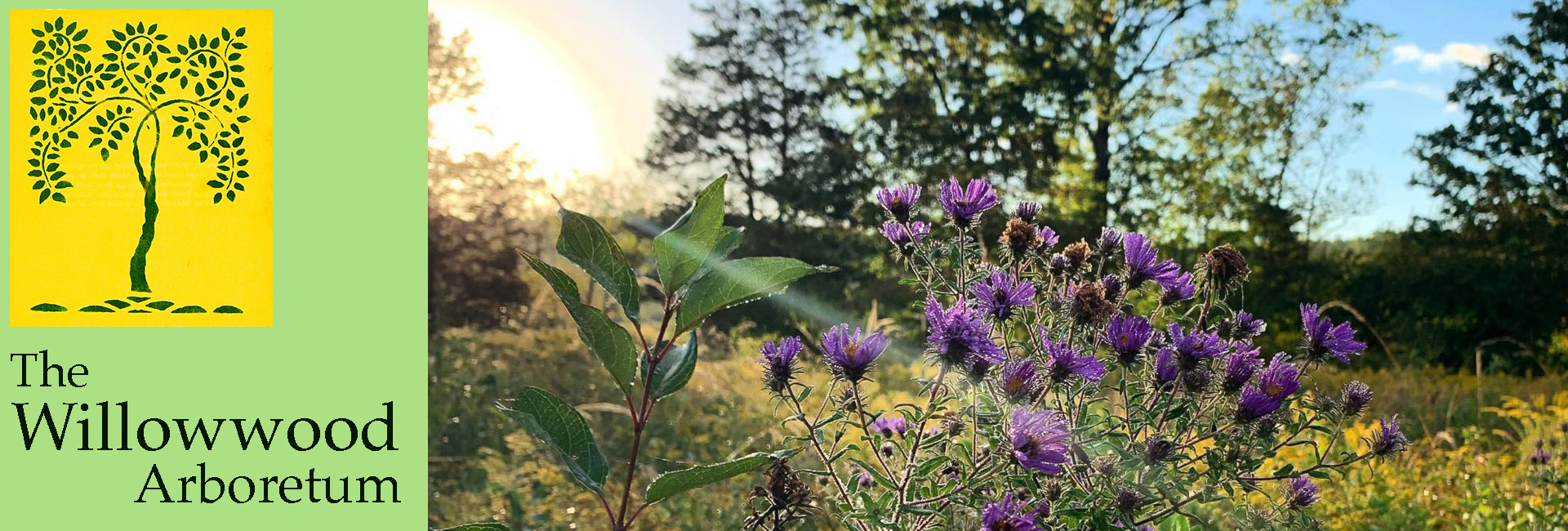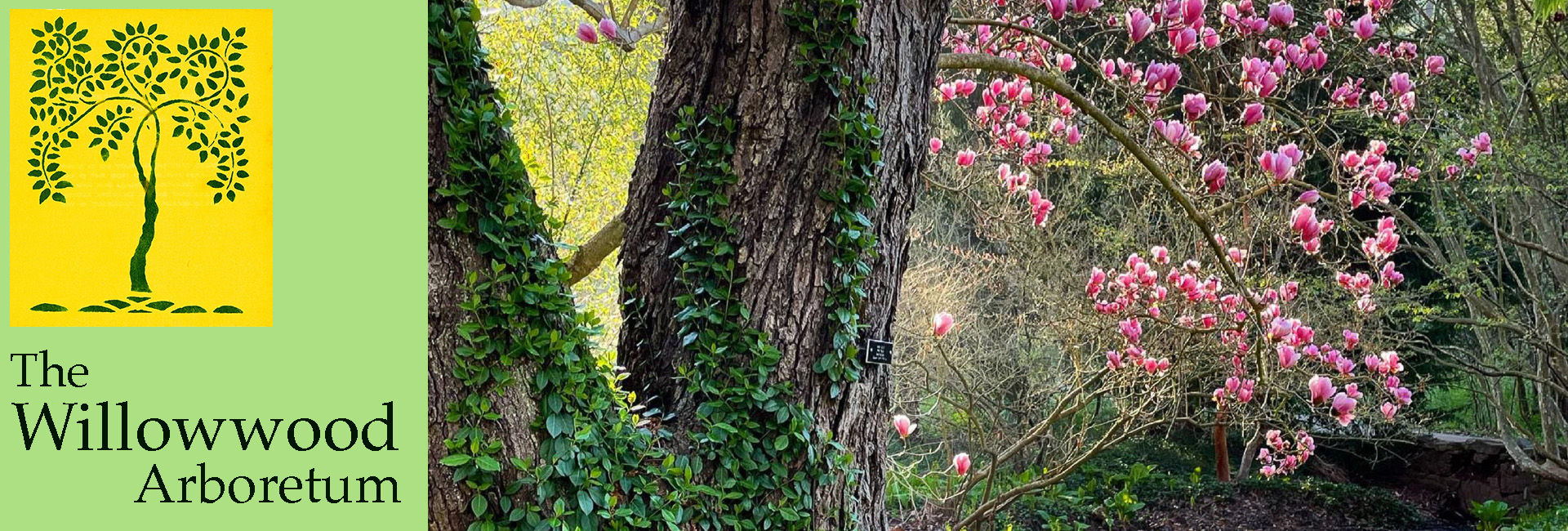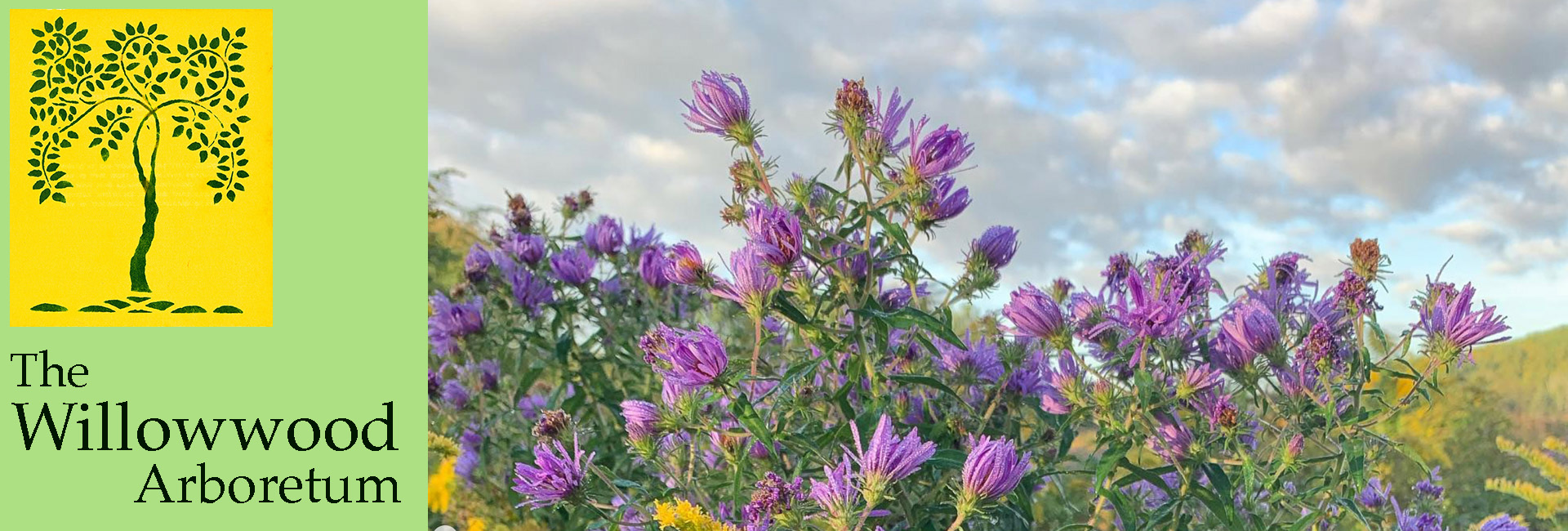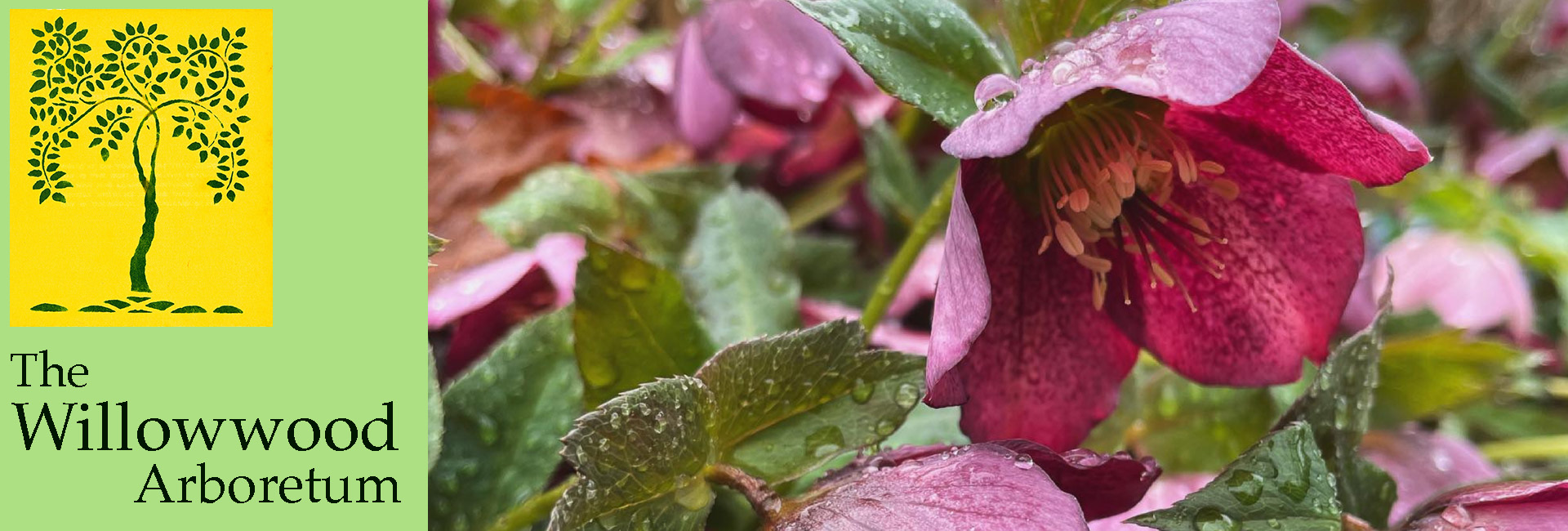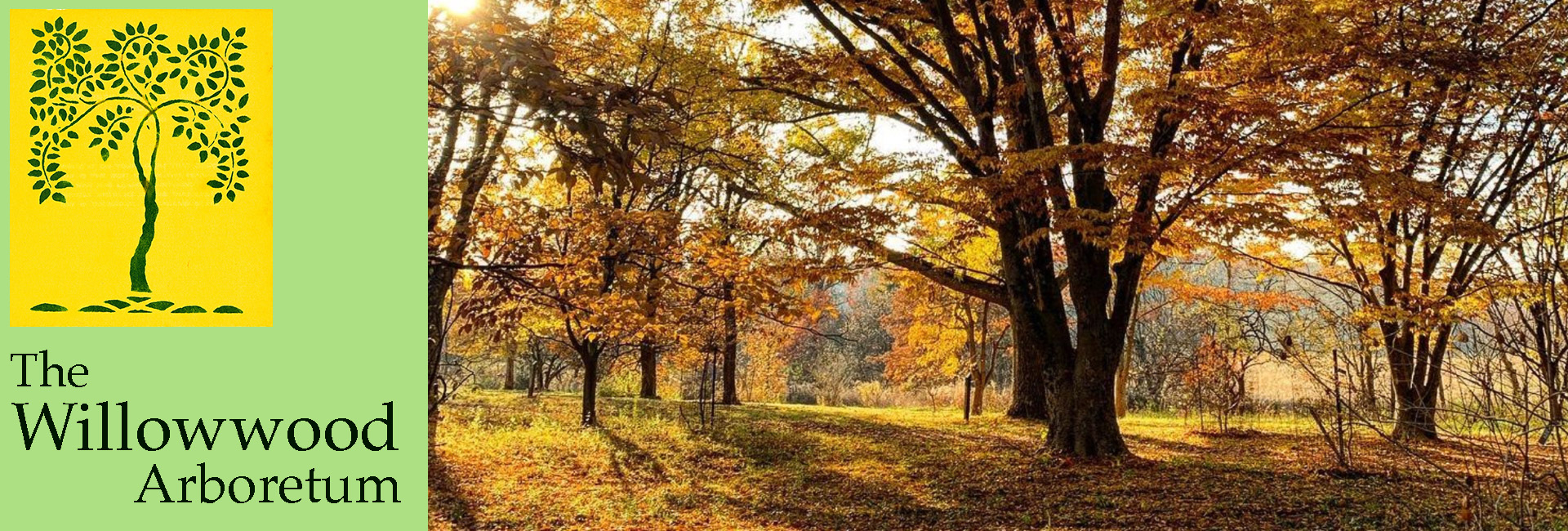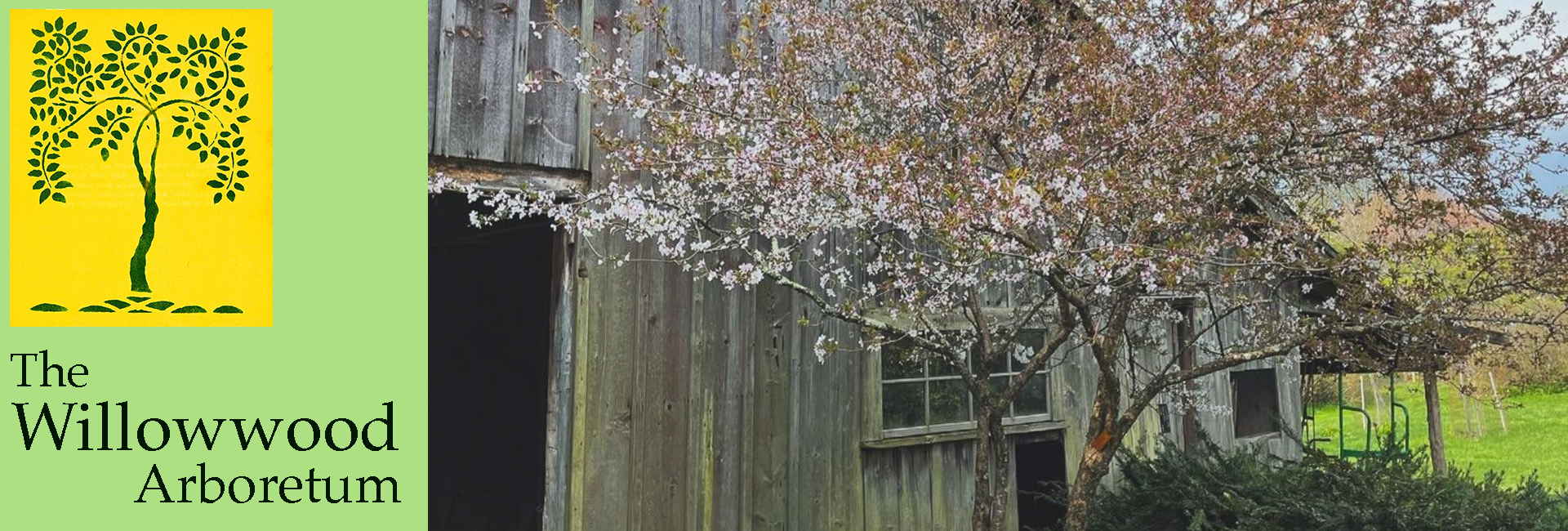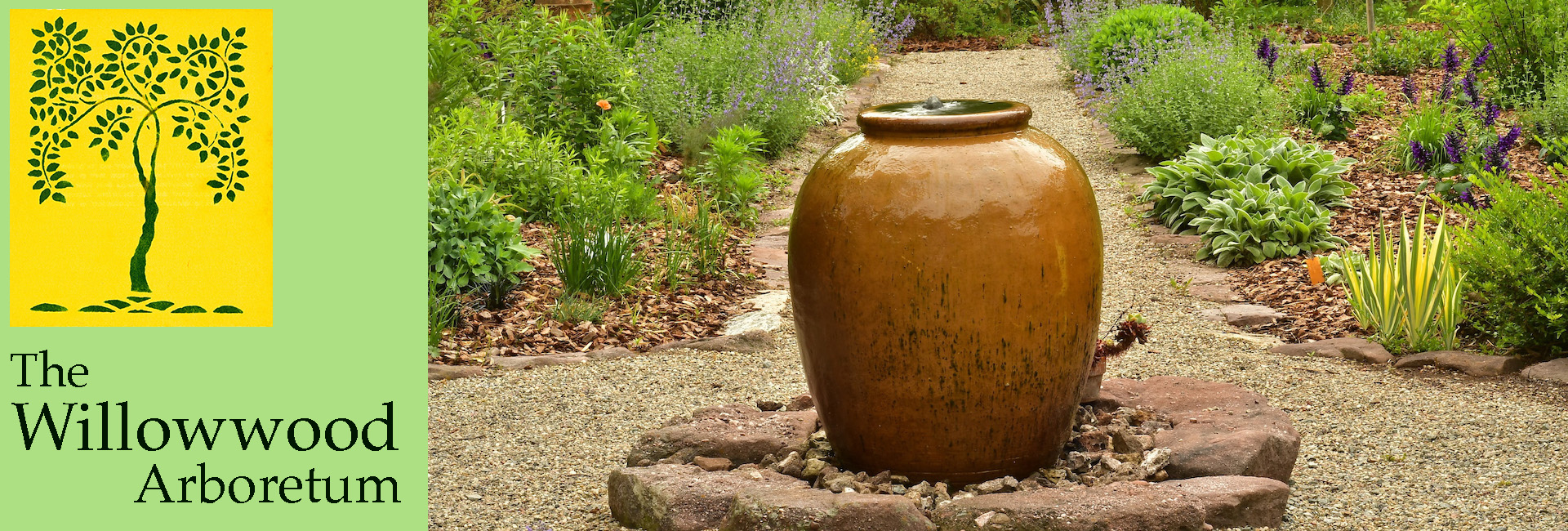There is a Fall Open House scheduled for Sunday October 4, 2015 from Noon to 4 pm with garden tours and the Tubbs House is open — but if you can’t visit then, come any day to the Arboretum 8 am to dusk and enjoy these beautiful gardens.
Judy Schaible, Superintendent of Horticulture at Willowwood, has provided this Fall Bloom Information:
“We’ve been busy at Willowwood keeping the gardens and newly planted trees watered this very dry summer so the gardens still have a lot of show left in them!
As you wind your way down the driveway through the fields you’ll see yellow Goldenrod(Solidago), purple New England Aster (Symphotrichum novae –angliae) and the coppery fall color of Little Bluestem(Schizachrium scoparium) in the meadows that surround you. After you park try taking a walk through the meadow paths, you’ll truly feel immersed in nature.
The Cottage Garden trellis is covered with the beautiful flowers and purple seed pods of the Hyacinth bean (Dolichos lab lab). See if you can pick out the pink flowers of Kiss Me Over The Garden Gate (Persicaria orientalis) towering over one of the beds. Many of the perennials such as Blue Star (Amsonia hubrictii) are starting to get their fall color with the shorter days and cooler nights.
The Elephant Ears (Colocasia) in the bed next the paved driveway have really enjoyed the heat that we’ve had and to quote one of the presidential candidates “They’re HUUUUGE”.
In the Rosarie, the pink Crape Myrtelettes (Lagerstroemia) are happily blooming away along with all of the annuals. If you saw this garden in the spring you have to come back and see it now. What a transformation!!
The Wood Walk should be starting with some fall color soon and is a relaxing stroll in any season.
Please come visit us and enjoy!”
